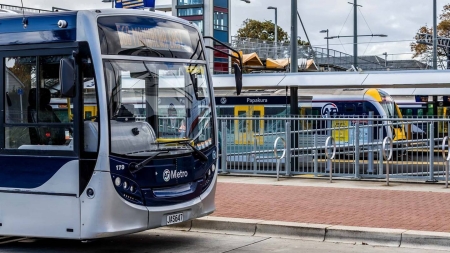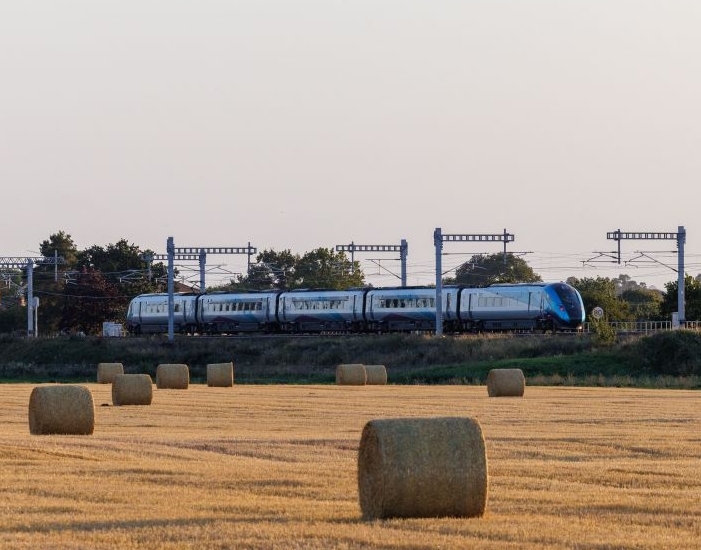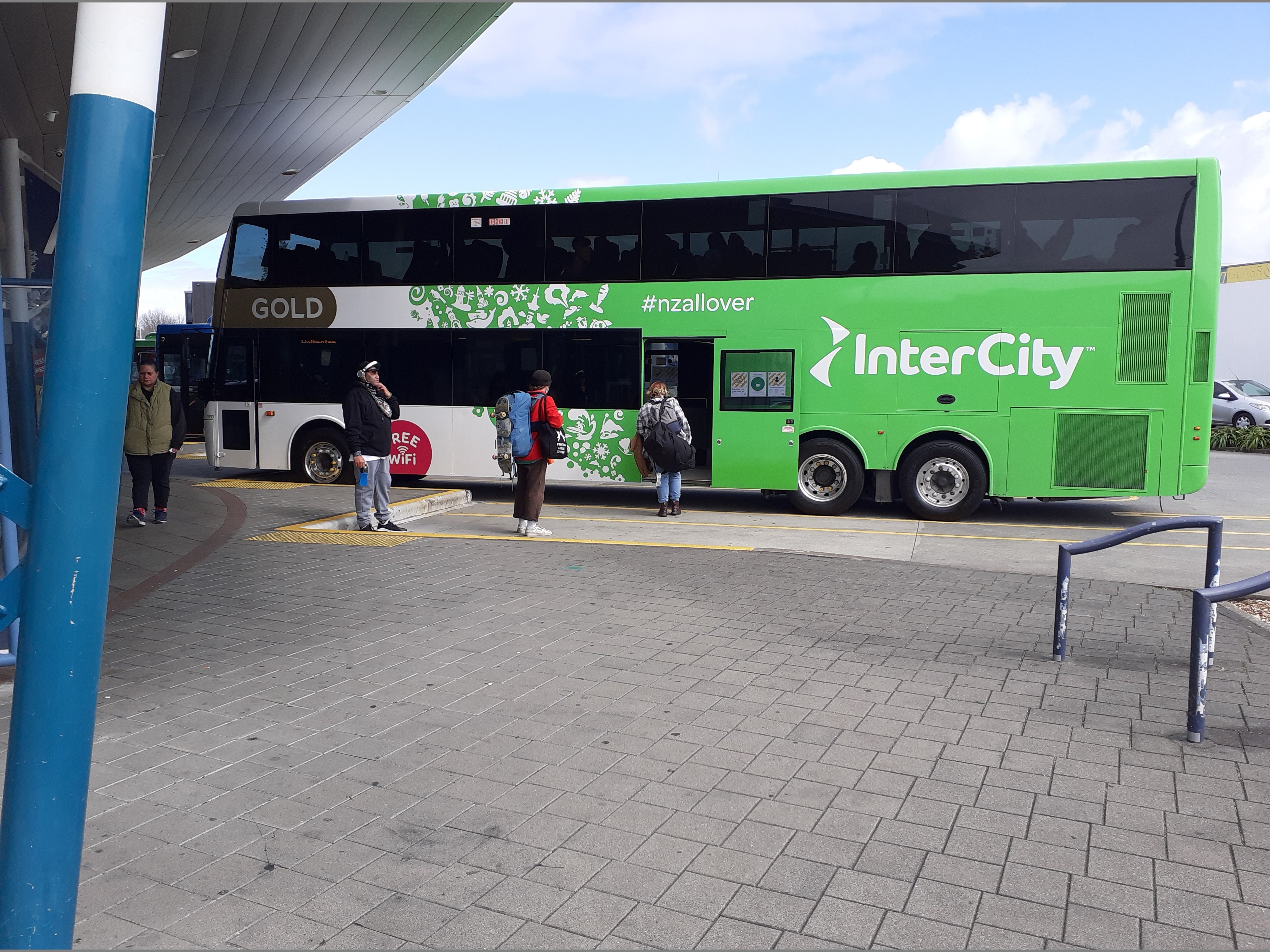Public transport in Aotearoa New Zealand is currently uncoordinated, not user friendly and lacks regional connectivity, is based on regionalised and commercialised procurement through the Public Transport Operating Model (PTOM), where each regional council develops and grows their own 'turn up and go' public transport service's using competitive tendering, to increase fare revenue whilst reducing reliance on rate and taxpayer subsidies, that has resulted in little or no inter-regional cooperation and planning, creating inequalities between regions.
The country has 16 local government administrative regions, of which 13 are deemed to be a 'Public Transport Agency' (PTA), with 1 region having a population over 1 million, 1 region having a population over 600,000, 2 regions having populations over 500,000, 1 region having a population over 300,000, 2 regions having populations over 200,000, 4 regions with populations between 100,000 to 199,999 and 5 regions with populations less than 99,999.
Densely populated regions like Auckland, Canterbury, Wellington and Waikato, have better 'urban metro' style public transport services yet region's with population less than 500,000 usually have low density populated semi rural towns and rural communities, so maintaining and operating a regional public transport system is expensive, especially for those region's who have population's less than 200,000.
In August 2022, the New Zealand government, announced changes to the current Public Transport Operating model (PTOM), with a more flexible planning, funding and procurement model - Sustainable Public Transport Framework, giving regional councils more flexibility to plan regional public transport services within their region.
In October 2022, the government announced the introduction of a national contactless 'tap and travel' payment system from 2024, for all subsidised 'turn and go' urban metro passenger rail, bus, local ferry, on-demand buses and regional passenger rail services across the country's 16 regions,
In September 2023, the government passed the Land Transport Management (Regulation of Public Transport) Amendment Bill, changing the Land Transport Management Transport Act 2003, allowing regional councils to work together in providing better urban, regional and inter-regional public transport services, creating a framework for an integrated national public transport network and a national public transport development and funding agency.
On 8th December 2024, the roll out of the national contactless 'tap and travel' payment system - Motu Move, started in Christchurch.
Why a National Public Transport Agency
A National Public Transport Agency would be an independent, national public transport development and funding entity, taking over public transport policy, planning and funding functions, either as a separate division within or separate from New Zealand Transport Agency / Waka Kotahi as an agency under the Ministry of Transport.
The creation of a National Public Transport Agency would:
- remove the current regionalisation and commercialism for public transport services
- allow regional councils in association with their city and district council's partners, to plan better public transport services with less bureaucratic procurement and funding processes
- provide dedicated funding for public transport services and infrastructure
- standardised national procurement and operational guidelines, employment contracts, working conditions, etc for public transport services
- create more connected public transport services between regions and greater utilisation of public transport assets such as buses and passenger trains, etc
- operate a national contactless 'tap and travel' payment system across all 16 regions in Aotearoa New Zealand
- provide a national information and timetable website and associated smart phone app that contains all 'turn up and travel' and 'book and travel' bus/coach, rail and ferry travel
How will a National Public Transport Agency operate
The National Public Transport Agency would help regional council's through their respective regional land transport plan's, to develop, fund and procure public transport services, through national operating guidelines and procedures, access to the national contactless 'tap and travel' payment/ticketing system and national travel information and timetable website and associated smart phone app.
The Agency would encourage its regional council partners to prioritize good intra/inter regional public transport services, public transport infrastructure and access in future urban planning and design.
What services would a National Public Transport Agency fund
The Agency would provide funding assistance to its regional council partners, for subsidised 'turn up and go' urban, semi rural, rural, regional and inter-regional bus/coach, train, light rail, ferry and other passive public transport services and related passenger infrastructure like stations, bus/train interchanges, bus terminals, etc across the country.
The Agency would not fund commercialised inter-regional and long distance coach and passenger train services, like 'InterCity' brand coach services and Kiwirail's 3 long distance passenger train services.
Where there is no public transport service/s, like between Fox Glacier to Wanaka and a commercialised coach and/or passenger train operator is providing such service/s, it would be deemed to be essential rural community connection/s and would receive funding from the Agency, as an 'essential' service/s.
How will a National Public Transport Agency be funded
Funding for the National Public Transport Agency would come from the National Land Transport Fund, fares from the national contactless 'tap and travel' payment system and from tailored funding solutions based on a regional council public transport plans will be, the region's population density and rate payer base.
In some cases where a region have low population density and rate payer base, funding could be up to 95% of a region's public transport services, like the Westland region.
For further information concerning the points raised in this discussion article -
- New Zealand's National Public Transport Network
- New Zealand's National Regional Passenger Rail Network
- Motu Move - National public transport payment system
- Lets Connect Communities
- Future of long distance passenger rail services in New Zealand
- New Zealand's unified passenger transport strategy
- Can semi rural towns and small rural communities have public transport?
The creation of The National Public Transport Agency is one of the initiatives of Public Transport Forum New Zealand.



